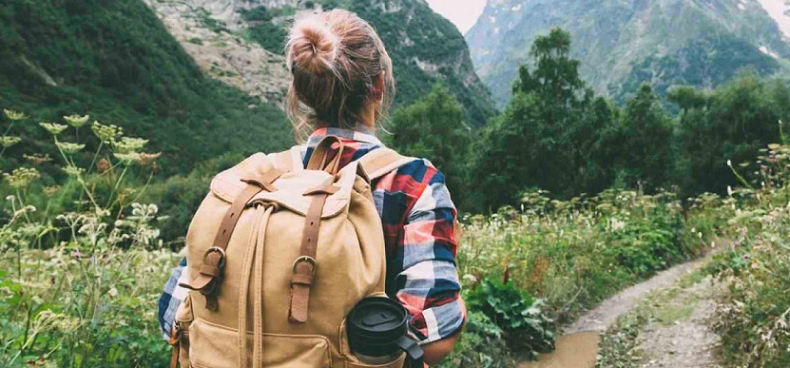
In our fast-paced world, it’s easy to get caught up in the rush of things, even when it comes to travel. We often try to pack as much as we can into a short amount of time, checking off items on our bucket lists and rushing to the next destination. But what if we took a step back and embraced the journey instead? This is the concept of slow travel, a way of exploring the world that prioritizes the experience over the destination.
What Is Slow Travel?
Slow travel is a mindset and a travel philosophy that emphasizes taking the time to fully experience a destination rather than just ticking off tourist attractions. The idea is to travel at a slower pace, allowing for a deeper connection with the local culture, people, and environment.
Unlike fast travel, where the goal is to see as much as possible in a short amount of time, slow travel is all about embracing the journey and enjoying the process of exploration. This means spending more time in fewer places, taking time to relax and unwind, and being open to unexpected experiences along the way.
One of the core tenets of slow travel is cultural immersion. By taking the time to learn about the local culture, customs, and way of life, travelers can gain a deeper appreciation and understanding of the places they visit. This might involve attending local festivals and events, trying traditional foods, or participating in cultural activities such as art or dance classes.
Another important aspect of slow travel is connecting with locals. Rather than just interacting with hotel staff and tour guides, slow travelers seek out opportunities to meet and talk with people in the local community. This might involve staying in locally owned accommodations, volunteering, or simply striking up conversations with people in cafes or on public transport.
In addition to the cultural and social benefits, slow travel can also have environmental benefits. By taking the time to explore a smaller area and using more sustainable modes of transportation such as walking, cycling, or public transport, travelers can reduce their carbon footprint and minimize their impact on the local environment.

Why Slow Travel Matters
Slow travel matters because it offers a number of benefits that are often missed in fast-paced, rushed travel. Here are some reasons why slow travel is important:
- Cultural immersion: Slow travel provides the opportunity to immerse oneself in the local culture, which is often missed when visiting tourist attractions at a breakneck pace. By taking the time to learn about the local culture, customs, and way of life, travelers can gain a deeper appreciation and understanding of the places they visit.
- Deeper connections with locals: Slow travel encourages travelers to connect with locals on a personal level, which can lead to a more authentic and meaningful travel experience. Rather than just interacting with hotel staff and tour guides, slow travelers seek out opportunities to meet and talk with people in the local community. You may even discover something about your own ancestry in talking with others.
- Reduced environmental impact: Slow travel can have a smaller environmental footprint than fast travel. By staying in one place for a longer period of time and using more sustainable modes of transportation such as walking, cycling, or public transport, travelers can reduce their carbon footprint and minimize their impact on the local environment.
- Personal growth: Slow travel can provide opportunities for personal growth and self-discovery. By slowing down and disconnecting from the stresses of daily life, travelers can gain a new perspective on their lives and priorities.
- Enhanced well-being: Slow travel can be good for one’s physical and mental health. By taking the time to relax and unwind, travelers can reduce stress and improve their overall sense of well-being.
- Meaningful memories: Slow travel allows travelers to create meaningful memories that will last a lifetime. By taking the time to fully experience a destination, travelers can create deeper connections with the places they visit and the people they meet.

Planning for Slow Travel
Planning for slow travel requires a different approach than planning for fast travel. Here are some key considerations to keep in mind when planning a slow travel experience:
- Research destinations: Choose destinations that lend themselves to slow travel. Look for places with a rich cultural heritage, a variety of activities, and a slower pace of life. Avoid destinations that are geared towards fast-paced tourism or are overly crowded.
- Create a flexible itinerary: Slow travel is all about being flexible and open to unexpected experiences. Create a loose itinerary that allows for plenty of downtime and opportunities for spontaneity. Don’t try to cram too many activities into each day or rush from one place to another.
- Choose modes of transportation that allow for a more immersive experience: Slow travel often involves using more sustainable modes of transportation such as walking, cycling, or public transport. These modes of transport allow travelers to experience the local environment and culture up close, rather than just seeing it from a car or bus.
- Find accommodations that align with the slow travel philosophy: Look for accommodations that are locally owned, eco-friendly, and offer opportunities to connect with locals. Avoid chain hotels and touristy areas.
- Allow for longer stays: Slow travel requires more time in each destination, so allow for longer stays. Consider renting an apartment or staying in a guesthouse to fully immerse yourself in the local community.
- Learn the local language: Learning a few key phrases in the local language can help travelers connect with locals and gain a deeper appreciation of the local culture. Consider taking a language course or using language-learning apps.
- Pack light: Slow travel often involves moving around more frequently, so pack light to make travel easier and more efficient. Focus on versatile clothing and essentials, and avoid overpacking.

Embracing the Slow Travel Journey
Embracing the slow travel journey involves adopting a different mindset and approach to travel. It’s about taking the time to fully experience a destination, rather than rushing from one tourist attraction to another. Slow travel is a chance to disconnect from the stresses of daily life and focus on the present moment.
One of the keys to embracing the slow travel journey is to slow down. Slow travel is all about taking the time to enjoy the journey and savor the moment. This means taking breaks, enjoying long meals, and taking time to relax and unwind. By slowing down, travelers can fully appreciate the beauty of their surroundings and gain a deeper appreciation of the places they visit.
Another important aspect of slow travel is unplugging from technology. Slow travel offers the chance to disconnect from devices that distract from the travel experience. By leaving behind devices that distract from the present moment, travelers can fully engage with the world around them and gain a deeper sense of connection with the places they visit.
Practicing mindfulness is another way to fully embrace the slow travel journey. Mindfulness involves being aware of your surroundings, noticing small details, and fully experiencing each moment. By practicing mindfulness, travelers can be fully present and engaged with the world around them.
Embracing unexpected detours is another key aspect of slow travel. Slow travel often involves being open to unexpected experiences and detours. Rather than sticking to a rigid itinerary, slow travelers are willing to embrace the unknown and allow themselves to be led by curiosity and spontaneity. By embracing unexpected detours, travelers can have experiences that they might have otherwise missed.
Connecting with the local community and culture is also an important part of embracing the slow travel journey. Slow travel is all about connecting with the local community and gaining a deeper understanding of the local culture.
This might involve trying traditional foods, attending festivals and events, and participating in cultural activities. By taking the time to connect with locals, travelers can gain a deeper appreciation of the places they visit and make meaningful connections along the way.
Slow travel is not just about the destination, but about the journey as well. By appreciating the beauty of the scenery, the people you meet, and the experiences you have along the way, travelers can fully embrace the slow travel journey and gain a deeper sense of connection with the world around them.
Connecting with Locals During Your Slow Travel
Connecting with locals is one of the key aspects of slow travel. It provides an opportunity to gain a deeper understanding of the local culture, make meaningful connections with people, and create a more authentic and memorable travel experience. Here are some ways to connect with locals during your slow travel journey:
Learning the local language can be a great way to connect with locals. Even if you don’t become fluent, learning a few key phrases such as “hello,” “thank you,” and “how are you?” can show respect for the local culture and help you communicate with locals more effectively. Consider taking a language course, using language-learning apps, or practicing with locals to improve your language skills.
Staying in locally owned accommodations is another way to connect with locals. Hotels, resorts, and other large-scale accommodations often feel sterile and disconnected from the local community. On the other hand, bed and breakfasts, guesthouses, and homestays are great options for travelers looking to connect with locals. These accommodations offer a chance to meet locals, learn about their way of life, and support the local economy.
Participating in community events is another great way to connect with locals. Check out local events such as festivals, markets, and concerts. These events offer a chance to experience the local culture up close and connect with locals who share your interests.
Volunteering is also a great way to connect with locals while making a positive impact on the local community. Look for local volunteering opportunities such as beach cleanups, language exchange programs, and community service projects. These activities provide a chance to meet locals, learn about their way of life, and give back to the community.
Taking a local class or workshop is another way to connect with locals. Consider taking a cooking class, dance lesson, or art workshop. These activities provide a chance to learn from locals, gain a deeper appreciation of the local culture, and make meaningful connections along the way.
Striking up conversations with locals is another way to connect. Don’t be afraid to talk to locals in cafes, on public transport, or in public spaces. Be respectful, open-minded, and willing to learn about their way of life. You might be surprised by the connections you make and the insights you gain.
Hiring a local guide is another way to gain a deeper understanding of the local culture and history. Look for guides who are passionate about their city or region and who can offer a personalized and authentic travel experience. A good guide can provide insider knowledge, connect you with locals, and help you create a more meaningful travel experience.
Sustainability and Slow Travel
Sustainability and slow travel are closely linked. Slow travel is a more sustainable way of experiencing the world, as it emphasizes using more sustainable modes of transportation and accommodations, reducing waste, and supporting local economies. Here are some ways in which slow travel promotes sustainability:
- Using sustainable modes of transportation: Slow travel often involves using more sustainable modes of transportation such as walking, cycling, or public transport. These modes of transportation reduce the carbon footprint of travel and allow travelers to experience the local environment and culture up close.
- Staying in locally owned accommodations: Slow travel emphasizes staying in locally owned accommodations that support the local economy and community. This reduces the environmental impact of travel by minimizing the use of resources and waste associated with large-scale accommodations.
- Supporting local businesses: Slow travel promotes supporting local businesses such as restaurants, cafes, and shops. This supports the local economy and community, while also reducing the environmental impact of travel by minimizing the use of resources and waste associated with large-scale tourism.
- Reducing waste: Slow travel emphasizes reducing waste by using refillable water bottles, reusable bags, and other sustainable travel products. This reduces the environmental impact of travel by minimizing the use of single-use plastics and other waste associated with fast-paced tourism.
- Embracing a minimalist approach: Slow travel encourages travelers to embrace a minimalist approach to travel by packing light and avoiding overconsumption. This reduces the environmental impact of travel by minimizing the use of resources and waste associated with overconsumption and excess.
- Supporting conservation efforts: Slow travel promotes supporting conservation efforts such as wildlife sanctuaries, national parks, and other protected areas. This supports conservation efforts and helps preserve the natural environment for future generations.
